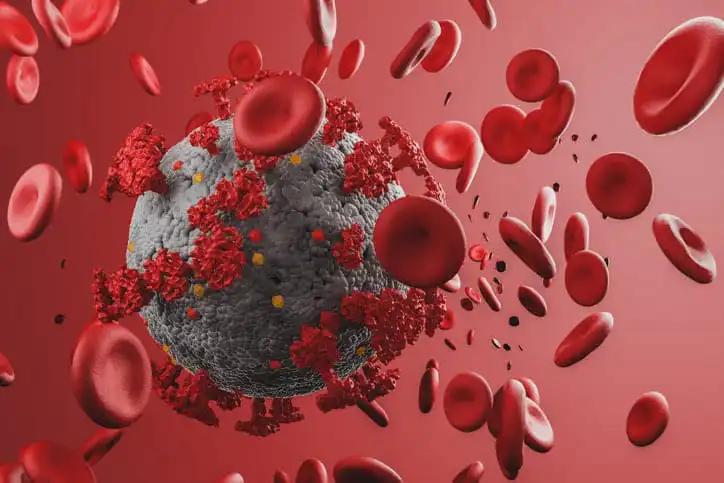KEY TAKEAWAYS
- The phase 3 BioPro-RCMI study focused on rectoprostatic spacer balloon as an alternative to hydrogel injections in patients receiving prostrate intensity-modulated radiation therapy (IMRT).
- The primary endpoint was met, with fewer balloon subjects experiencing Grade 1 or higher adverse events than the control group.
- A predefined secondary endpoint involving ≥Grade 2 adverse events showed lower rates in the balloon group.
- The study highlighted the efficacy of the biodegradable rectal spacer balloon in reducing rectal radiation exposure, leading to a decrease in adverse events related to both rectal exposure and balloon implantation.
Rectal gel spacers have demonstrated the capacity to reduce rectal side effects experienced by prostate radiation patients (pts). However, apprehensions persist regarding the accurate and consistent administration of gel injections. The study reported findings on balloon-type rectoprostatic spacer, which offers the potential for controlled and flexible deployment without the time limitations associated with hydrogel injections. The objective of the study was to assess both effectiveness and safety and formulated two primary hypotheses: 1) Balloon spacer would yield a rectal V70 reduction of ≥25% in over 75% of participants, and 2) Procedure-related implantation and rectal adverse events of ≥ Grade 1 would exhibit non-inferiority between subjects using the balloon and those in the control group (events with duration ≥2 days within six months, CTCAE 4.0).
A total of 222 participants were enlisted from 16 centers. All pts had biopsy-confirmed T1-T3 prostate cancer without MRI indications of posterior extraprostatic invasion. Those undergoing brachytherapy or whole pelvic radiation therapy were excluded. The randomization followed a 2:1 ratio (balloon: control), with the subjects unaware of their allocation. Each patient underwent transperineal transrectal ultrasound (TRUS)-guided placement of fiducial markers±biodegradable balloon, followed by intensity-modulated radiation therapy (IMRT). To compare efficacy endpoints, plans were devised by a central core lab using pre- and post-implant CT scans (administering 81 Gy in 1.8 Gy fractions). An impartial Clinical Events Committee evaluated adverse events.
The primary measure of efficacy yielded positive results, as 97.9% of participants using the balloon (139/142) exhibited a reduction of rectal V70 > 25% (pre- and post-implant,p<0.001, 95% CI: 94.0, 99.6%). Mean V70 was 7.0 % pre- vs. 1.1% post-implant. Comparable declines were noted across rectal V40-V80. The mean spacing achieved between the prostate and rectum (19+3.7mm) was maintained throughout radiation therapy (18+3.9mm). Successful balloon placement was achieved in 99% of the subjects. The primary endpoint was achieved, with fewer subjects using the balloon experiencing events of Grade 1 or higher (18% vs 23%, p<0.001, 95% CI: -15.7%, 5.5%). While the event rate was higher in the balloon group during the early post-implant period, the control arm surpassed the balloon group on or after day 44. Concerning a predefined secondary endpoint involving≥Grade 2, rates were lower in balloon subjects (4.3% vs. 6.5%). Complete resorption of the balloon was observed in 98.5% of subjects (133 out of 135) based on the 6-month CT scans.
The efficacy of the biodegradable rectal spacer balloon was evident in its substantial reduction of rectal dose, accompanied by a decrease in combined adverse events related to rectal exposure and implantation. The consistent observation of balloon resorption within six months further highlighted its effectiveness.
Source: https://www.auajournals.org/doi/10.1097/JU.0000000000003262.11
Clinical Trial: https://classic.clinicaltrials.gov/ct2/show/NCT02478112
Song, Daniel; Dabkowski, Mateusz; Poland, Warsaw; Costa, Paulo; Nurani, Rizwan; Kos, Michael; Vanneste, Ben; Margel, David; Sapir, Eli; Zimberg, Shawn; Boychak, Oleksandr; Soffen, Edward; Alhasso, Abdulla; Tokita, Kenneth; Wang, Dian; Symon, Zvi; Hudes, Richard PD15-11 EFFICACY AND SAFETY OF BIODEGRADABLE RECTAL SPACER BALLOON IN PATIENTS RECEIVING PROSTATE IMRT: AN INTERNATIONAL PHASE 3 RANDOMIZED TRIAL, Journal of Urology: April 2023 – Volume 209 – Issue Supplement 4 doi: 10.1097/JU.0000000000003262.11



